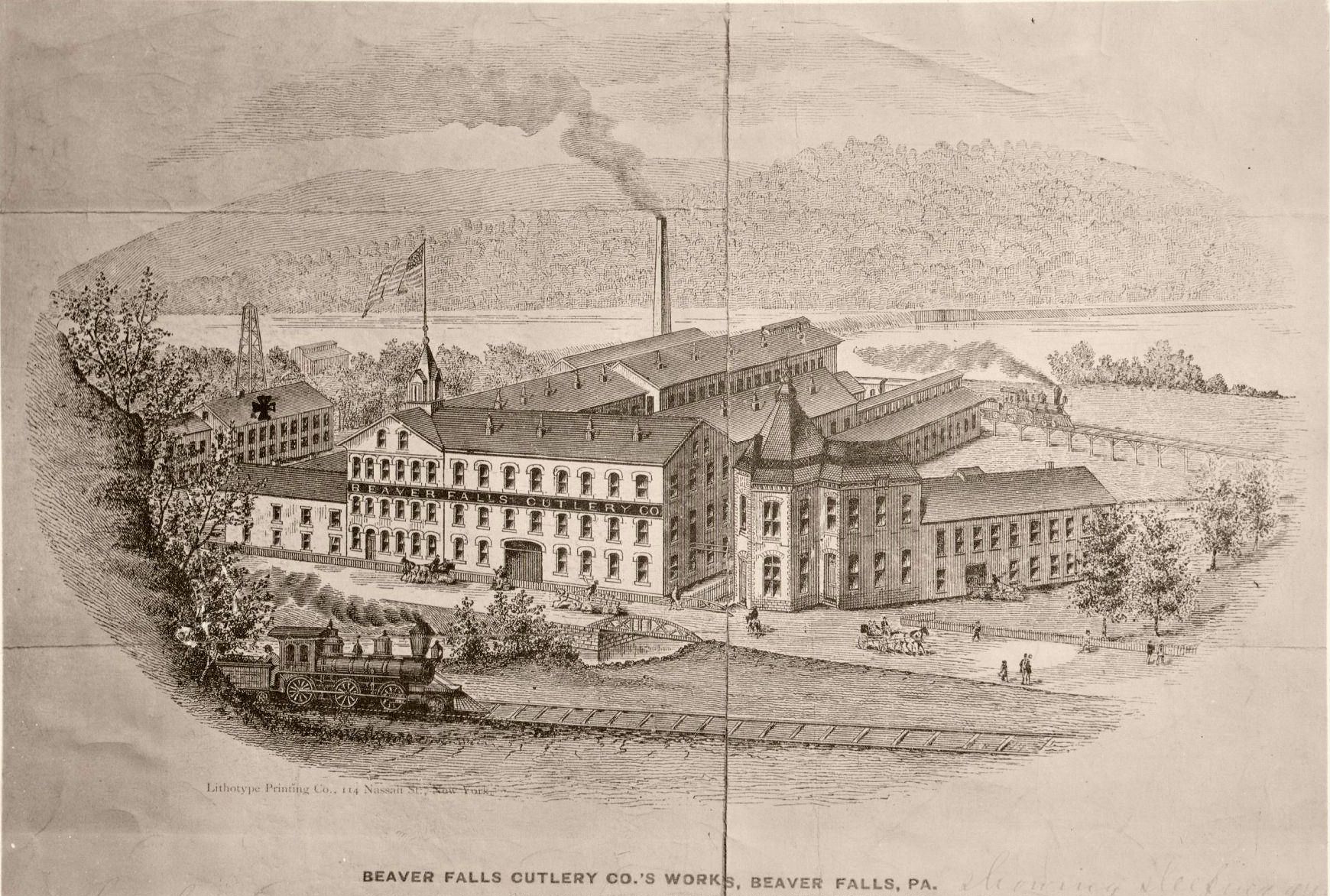There are never any shortage of rabbit holes to dive down in this business, and you never know where they might take you. When I asked Mark if there were any good stories tying knife history to Labor Day, I wasn’t expecting to go down a rabbit hole which connected to another recent topic on these digital pages – namely Samuel Mason and the Beaver Falls Cutlery Company.
Video: A Collection of Early American Pocket Knives – Samuel Mason
Mason, a Sheffield, England-born and trained Master Cutler, had been one of the founders of Northfield Cutlery in Connecticut, but left the company in 1865. In 1866, he partnered with Edward Binns to form Binns and Mason, in Rochester, Pennsylvania. Their name was changed to the Pittsburg Cutlery Company when more investors were brought on board, and later to Beaver Falls Cutlery Company when the firm was purchased by the Harmonists, a religious sect which had founded the nearby town of Beaver Falls, PA.
Mason, who had remained as Manager, was never much of a business man. He was dismissed from the company when the Harmonists brought in Henry T. and John Reeves to manage operations. For a while the company thrived, but began to suffer from labor disputes. The company was realizing record profits, but worker satisfaction plummeted as few concessions were made to them. After a series of strikes, the company made the decision to replace many of the workers with Chinese laborers imported from San Francisco. These men, many of whom had worked on the recently completed Transcontinental Railroad, arrived on July 1st, 1872 having signed 5 year contracts.
The company was able to significantly cut wages by hiring the Chinese, however, they were not as skilled as the former workers, many of whom, like Mason, had emigrated from Sheffield.
“When the Chinese arrived at the cutlery, it was believed they could learn the whole cutlery trade in about 5 months. This did not come to fruition. Therefor, methods employed in the factory were changed to suit the new workers. English cutlers could make each item from beginning to end. This was not possible with the Chinese workers. A production line was developed with each of the workers completing only one step in the knife process. This made training the new workers easier, and they learned their jobs in a short time. The manufacture of pocketknives required more skills than the Chinese possessed. The English who stayed in Beaver Falls worked at pocketknife production, while the Chinese worked in the table cutlery, butcher, and carving knife sections of the plant.” (Goins, 1989)
The Chinese workers were not above striking either, and did so on multiple occasions. A portion of the Chinese workforce departed over the duration of the contract, and the remaining half left at its conclusion, having been provided, per its terms, with train fare back to California.
More English and American workers were brought back in to replace the departing Chinese, at lower wages than they had been receiving 10 years prior. However, the company struggled, eventually closing its doors in 1886. An interesting side note – the equipment from the Beaver Falls Cutlery Company was purchased by the Cattaraugus Cutlery Company of Little Valley, New York in 1890.
This post was largely sourced from the November 1989 National Knife Magazine, a publication of the National Knife Collector’s Association. Titled “Early American Knifemakers: Beaver Falls Cutlery Company”, it was written by the late John Goins and his wife, Charlotte. Additional information was gathered from the Goins Encyclopedia of Cutlery Markings (1998), also by John and Charlotte Goins. Photo credit:Beaver County Times


